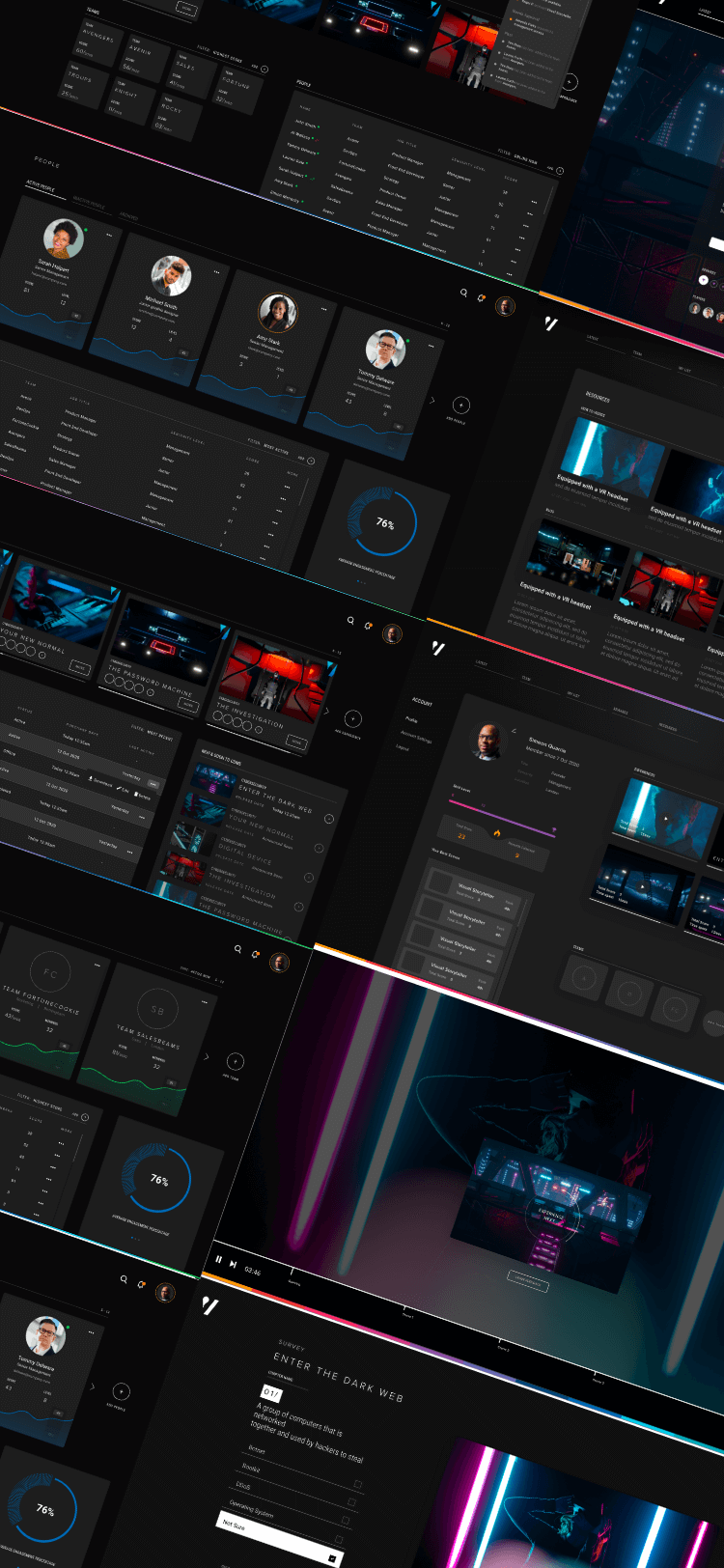What is Gamification?
Gamification is the act of applying game elements or principles to an activity that is not typically considered a game. This can be something as simple as keeping score for a task that would otherwise be much more menial. When you and a co-worker keep score to see who can toss paper in the bin from the furthest away, you would in effect be gamifying the way you keep the office tidy.
Gamifying a task like this can have many positive effects if implemented correctly, which is one of the many reasons we apply these principles throughout our employee training experiences.
Why use gamification in training exercises?
A good example of gamification can be found in the release of 2016’s Pokemon Go. Through requiring users to walk long distances in order to interact with many of the game’s features, this mobile app encouraged many to improve their physical fitness for the time it was massively popular. A paper by the Journal of the American Heart Association found that in the subjects they surveyed the daily average of steps rose by over 30%. By gamifying the way people exercise, developer Niantic was able to get people invested in exercise.
A similar effect can be perceived in learning in that gamification increases audience engagement. This is largely due to the fact that most games are interactive. In gamifying a learning environment the user is now taking an active part in their learning, they no longer take a backseat into a passive role.
How do we gamify our training exercises?
We gamify our tasks in many unique ways, relying on specific practices to elevate our modules in ways that regular training cannot compare. Below are just a few examples of how we engage our audience on a much deeper level.
1. Puzzle Solving
![]()
Our team based exercise has a number of puzzles that groups need to solve together in order to progress. One of these puzzles is about sifting through large amounts of information, too much for an individual to do so on their own. It’s much more efficient for the group to divide the task of going through the information between themselves. This means the group will simultaneously develop their communication skills as well as their subject knowledge as they now have to be familiar enough with the subject in order to communicate with the rest of the group effectively on the matter. Additionally if someone’s lagging behind in knowledge, other members of the group can more effectively help bring them up to speed since everyone has a vested interest in getting to the end of the puzzle.
As well as inspiring team based communication in order to get all the puzzle pieces, the puzzle segments also get people to start thinking about the information logically and critically. Partnered with the satisfaction that comes with finally solving the puzzle, the reward of endorphins rushing through, the information becomes that much more difficult to forget.
2. Earning Points
In both our individual and group training experiences we implement points systems that track how well users do and reward them based on performance. Usually this means keeping track of the number of correct answers an individual gives, however our team building experience is a little more complex, instead being based on how efficiently the group completes a task correctly.

Virtual rewards for achieving learning goals
Growth Engineering writes that, ‘By giving virtual rewards for achieving learning goals, learners begin to associate the learning with positive emotions, prompting them to try to repeat it’. This means that by simply increasing a user’s score after they perform well, it builds a positive association that encourages them to learn and retain information.

Individuals can track their progress
It also allows individuals to track their progress in specific subject areas. If someone doesn’t score so well in the phishing email simulator for example, they know it’s an area in need of improvement. Simply being aware of their shortcomings will allow them to address these areas and improve.
3. Leaderboards
An added benefit of having a points system is that it allows us to implement leaderboards as well. Our team based experiences feature one at the end of the final task, ranking companies/groups of employees against each other based on how they have scored.

The Teams Leaderboard
Leaderboards can be effective for how they encourage competition and have the potential to go viral throughout a company. Teams will talk about how well they scored against one another, with every subsequent team becoming more focussed than the last, determined to get a higher score. This added level of focus will help employees to engage with the experience on a deeper level in the hopes it may help improve performance, which results in a better educated workplace.
However, this feature needs to be implemented correctly if it is to have this positive effect. If too much focus is given to the top or bottom positions there’s a chance teams may become demotivated. In short, no one wants to be right at the bottom or below the average. It may cause people to become jealous of those at the top achieving a level of success that seems untouchable. It may make a team indifferent to improvement if that level of success seems too untouchable. A good leaderboard will encourage collaboration and teamwork, not focus on individual success or failure.
With this in mind, we make a point to focus on the groups immediately above and below the current group, rather than just the names at the top, in an effort to provide achievable growth and competition.
Moreover, we make sure the leaderboard is only shown at the end so that it doesn’t hang over the entire experience. This helps to ensure participants aren’t distracted with the performances of others.
Finally we only measure the superficial aspects in our scoring system, like how fast a group is able to complete a puzzle. This has no real bearing on how effective an employee is in retaining the information which ensures they can compete with one another in friendly competition all while everyone is given equal opportunity to learn without judgement. We reap all the positive aspects of the leader board without succumbing to any of the potential pitfalls.






